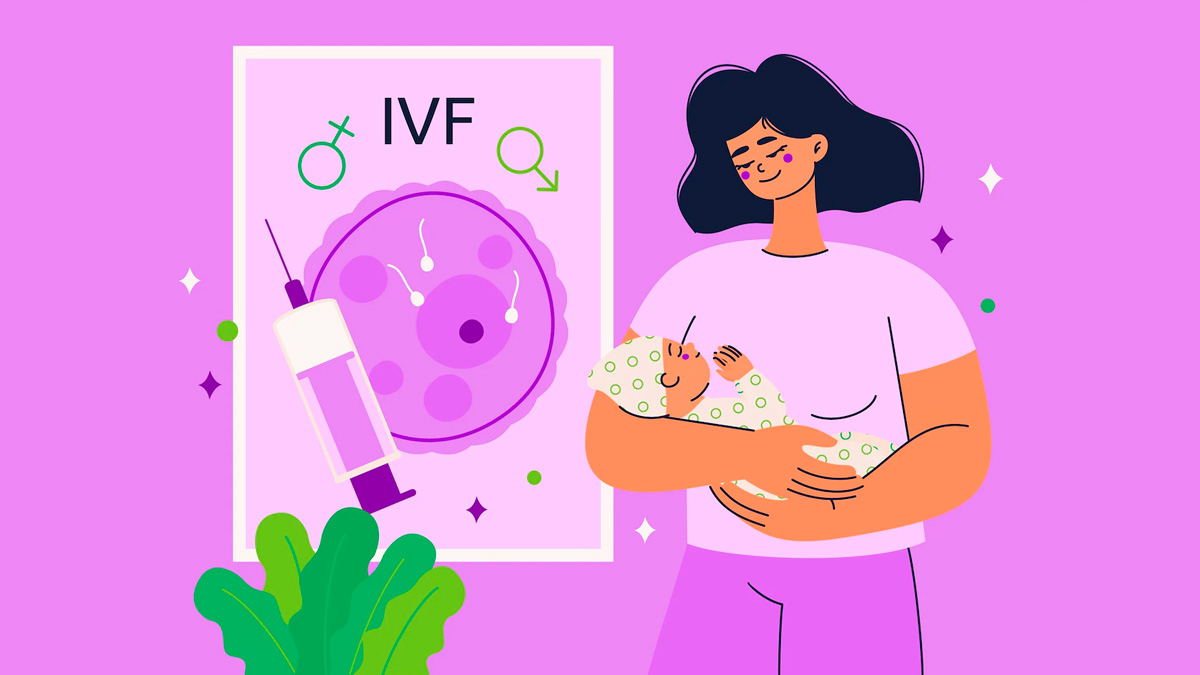Sociology - Caste and Class - Nepal
Information about the concepts of caste and class in the context of Nepal.
**Caste in Nepal:**
Caste has played a significant role in the social structure of Nepal for centuries. The caste system in Nepal is deeply rooted in Hindu traditions and divides society into hierarchical groups, often referred to as "jatis" or "varnas." Each caste has traditionally been associated with specific occupations and social roles. The caste system has historically determined social interactions, marriage alliances, and access to resources and opportunities.
The caste system in Nepal was officially abolished in 1963, but its influence still lingers in various aspects of Nepali society. Discrimination, untouchability practices, and restricted social mobility continue to be challenges. Dalits (formerly known as "untouchables") have been the most marginalized group within the caste system, facing systemic discrimination and exclusion.
**Class in Nepal:**
While caste has been a significant factor in the social structure, class distinctions based on economic factors have also been influential in Nepal. The country's economy is primarily agrarian, with a majority of the population engaged in subsistence agriculture. This has led to an uneven distribution of wealth and resources, contributing to socioeconomic disparities.
Urbanization and economic changes in recent years have led to the emergence of a growing urban middle class and an increasingly interconnected economy. However, class divisions often intersect with caste divisions, as historically disadvantaged castes have had limited access to education and economic opportunities, which can perpetuate economic inequality.
**Interplay between Caste and Class:**
The interplay between caste and class in Nepal is complex. While efforts have been made to address caste-based discrimination and promote social inclusion, structural inequalities persist. Disadvantaged castes often face barriers to accessing education, healthcare, and employment opportunities, which in turn affects their economic mobility.
Political and policy initiatives have been launched to address these inequalities, including affirmative action programs and reservations in government jobs and educational institutions for marginalized groups. However, the effectiveness of these measures has been debated, and the process of social change is gradual.
It's important to note that Nepal is a diverse country with various ethnic groups, languages, and cultural practices. The experiences of caste and class can vary across different regions and communities.
The Book "Homo Hierarchicus" was the Brahminical view of caste (Berreman, 1991), Discuss.
"Homo Hierarchicus: The Caste System and its Implications" is a book written by Louis Dumont, not Berreman, published in 1966. It is an influential work that examines the caste system in India, particularly from the perspective of Brahminical ideology. While Berreman is also a notable scholar who has written about caste and related topics, it's important to correctly attribute "Homo Hierarchicus" to Louis Dumont.
Louis Dumont, a French anthropologist, conducted extensive research on Indian society, particularly focusing on the caste system. "Homo Hierarchicus" presents his analysis of the caste system, emphasizing the ideological foundations and the social hierarchy it establishes. The book explores the worldview of traditional Indian society, with a focus on the Brahminical perspective.
Dumont's key argument revolves around the concept of hierarchy. He suggests that the caste system is not merely a system of social stratification but a complex cultural structure that reflects a particular way of thinking and organizing society. In the Brahminical view presented in the book, Dumont argues that hierarchy is an inherent and fundamental aspect of the Indian social order.
The Brahminical view, as portrayed by Dumont, perceives hierarchy as natural and essential for maintaining order and balance in society. This perspective is rooted in the religious and philosophical beliefs of Hinduism, where each caste is assigned a specific role and duty (dharma) based on their position in the hierarchy. The Brahmin caste is traditionally placed at the top of the hierarchy due to its role in performing religious and intellectual functions.
Dumont's work is notable for its focus on the ideological underpinnings of the caste system rather than just its structural aspects. He delves into the symbolic meanings associated with different castes and the ways in which these meanings are expressed in everyday life, rituals, and social interactions.
While "Homo Hierarchicus" provides valuable insights into the Brahminical perspective on caste, it has also been subject to criticism and debate. Critics argue that Dumont's portrayal might oversimplify the complexity and diversity of the caste system and its historical variations. Additionally, some scholars contend that the book does not adequately address the agency of lower-caste individuals and their resistance to oppressive caste norms.
Overall, "Homo Hierarchicus" remains an influential work in the field of Indian sociology and anthropology, shaping discussions and understandings of the caste system and its cultural implications.
What is the caste hierarchy of Nepal based on muluki Ain of 1854?
The "Muluki Ain" of 1854, also known as the "Legal Code of Nepal 1854," was a comprehensive legal code enacted by the then ruling Rana regime in Nepal. This legal code included provisions related to various aspects of Nepalese society, including caste hierarchy. The caste hierarchy outlined in the Muluki Ain was largely influenced by Hindu caste-based social norms prevalent at the time. Here is a simplified version of the caste hierarchy based on the Muluki Ain:
1. **Brahmins**: At the top of the hierarchy were the Brahmins, who were traditionally priests and scholars. They were considered the most pure and were responsible for performing religious ceremonies.
2. **Chhetris**: The Chhetri caste was considered second in the hierarchy. They were often associated with martial and administrative roles. They were historically involved in the military and held positions of authority.
3. **Vaishyas**: The Vaishya caste included merchants, traders, and farmers. They were involved in economic activities and were considered below the Brahmins and Chhetris in the social order.
4. **Shudras**: The Shudras were laborers, artisans, and service providers. They were placed below the three higher castes and often had limited social and economic mobility.
5. **Dalits**: The Dalits, often referred to as "untouchables," were at the bottom of the hierarchy. They were assigned tasks considered impure, such as cleaning and handling deceased animals. They faced severe social discrimination and exclusion.
It's important to note that the caste hierarchy outlined in the Muluki Ain was a reflection of the societal norms and power structures prevalent during that time. The Muluki Ain was abolished in the 1950s, following political changes in Nepal, and the country underwent a series of reforms aimed at addressing caste-based discrimination and promoting social equality. Despite these reforms, caste-based inequalities and discrimination have persisted to some extent in Nepalese society.
Additionally, Nepal's transition to a federal democratic republic in the 21st century has led to further changes in the social and political landscape, and discussions around caste and social justice continue to be relevant in the country's ongoing development.
Title: Caste Hierarchy in Nepal According to the Muluki Ain of 1854: Historical Context and Implications
**Page 1: Introduction**
The Muluki Ain of 1854, also known as the Legal Code of Nepal 1854, played a pivotal role in shaping the socio-cultural and legal landscape of Nepal during the Rana regime. One of the key aspects outlined in the Muluki Ain was the hierarchical caste system that reflected the prevailing Hindu social norms of the time. This essay delves into the caste hierarchy as delineated in the Muluki Ain, its historical significance, and its implications for Nepalese society.
**Page 2: Caste Hierarchy in the Muluki Ain**
The Muluki Ain established a rigid caste hierarchy that structured society based on traditional Hindu principles. At the top of the hierarchy were the **Brahmins**, revered for their role as priests and scholars. They held significant influence over religious and intellectual matters. Following the Brahmins were the **Chhetris**, associated with military and administrative roles. The **Vaishyas**, comprising traders and farmers, were the third caste. **Shudras** occupied the fourth tier and performed labor, artisan, and service roles. Lastly, the **Dalits** were positioned at the lowest rung, subjected to extreme social discrimination and relegated to menial tasks.
**Page 3: Historical Context**
The caste hierarchy established by the Muluki Ain reflected the broader societal norms and power dynamics of its time. The Ain codified the existing caste divisions that had their roots in Hindu scriptures and tradition. The privileged status of the Brahmins and Chhetris was reinforced by their roles in religious and administrative domains. The caste hierarchy, therefore, became an instrument of social control and legitimized the prevailing socio-economic disparities.
**Page 4: Implications and Consequences**
The caste hierarchy defined by the Muluki Ain had far-reaching implications for Nepalese society. It reinforced social inequalities by cementing privileges for the higher castes and perpetuating discrimination against the lower castes, especially the Dalits. This discrimination had deep social, economic, and psychological impacts, limiting opportunities for upward mobility and reinforcing intergenerational cycles of disadvantage.
**Page 5: Resistance and Reform**
Over time, the oppressive nature of the caste hierarchy sparked resistance and led to reform movements. Advocates for social justice challenged the discriminatory practices rooted in the Muluki Ain. The movement gained momentum during Nepal's transition to a federal democratic republic. The constitution of 2007 recognized the need to eliminate untouchability and caste-based discrimination, marking a significant departure from the Muluki Ain's provisions.
**Page 6: Contemporary Landscape and Conclusion**
In contemporary Nepal, the remnants of the caste hierarchy from the Muluki Ain era persist, although they have been challenged by reforms and changing societal dynamics. The country's transition to a federal democratic republic and its commitment to social justice and equality are transforming the landscape. While the Muluki Ain's caste hierarchy once rigidly governed society, the complexities of modern Nepal demand more inclusive and egalitarian approaches.
In conclusion, the caste hierarchy established by the Muluki Ain of 1854 in Nepal reflected the hierarchical structure of Hindu social norms at the time. This hierarchy not only defined social positions but also shaped access to opportunities and resources. Understanding the historical context and implications of this hierarchy is crucial for comprehending the challenges and changes in Nepal's socio-cultural landscape. As Nepal continues to evolve, addressing the legacy of the caste system remains an ongoing process that intersects with broader struggles for equality and social justice.
Discuss the Newar caste hierarchy based on Gopal Singh Nepali (1965)?
Gopal Singh Nepali (1911–1963) was a prominent Nepali poet, playwright, and lyricist. While his works often explored a range of themes, including social issues, his writings are not typically associated with an extensive analysis of the Newar caste hierarchy. Therefore, there might be some confusion regarding Gopal Singh Nepali's specific contribution to discussing the Newar caste hierarchy in 1965.
However, I can provide you with a general overview of the Newar caste hierarchy based on traditional social structures prevalent in the Newar community of the Kathmandu Valley, Nepal. Keep in mind that caste hierarchies can be complex and vary across different sources and regions.
**Newar Caste Hierarchy:**
The Newars are the indigenous people of the Kathmandu Valley, with a rich history and unique culture. The Newar society historically operated with a caste-based social hierarchy, although there have been variations in its specifics over time.
1. **Brahmins**: The Newar Brahmins traditionally held a high social status due to their role in performing religious rituals and ceremonies. They were often associated with temples and religious institutions.
2. **Chathariyas/Kshatriyas**: This caste, also known as Chathariyas or Kshatriyas, was historically associated with warrior and administrative roles. They held positions of power and were involved in the governance of the valley.
3. **Vaishyas**: The Vaishya caste comprised traders, merchants, and businesspeople. They played a crucial role in commerce and economic activities in the valley.
4. **Shresthas**: The Shresthas were a diverse group engaged in various professions such as trade, business, and service. They held significant influence in the urban centers of the valley.
5. **Jyapus**: The Jyapus were primarily involved in farming and agriculture. They held an essential role in providing food to the community and were known for their expertise in traditional agricultural practices.
6. **Gubhaju**: The Gubhajus were primarily priests who performed rituals for specific deities. They held a unique position in Newar society due to their religious duties.
7. **Kusundas**: The Kusundas were often marginalized and were traditionally associated with hunting and gathering activities.
8. **Kumhals**: The Kumhals were engaged in pottery and crafting activities, contributing to the artistic and utilitarian needs of the community.
It's important to note that the Newar caste hierarchy was not as strictly stratified as some other caste systems in South Asia. Interactions and intermarriages between castes were not uncommon, and social mobility could occur through various means, such as economic success, education, and inter-caste marriages.
While the traditional caste system still has some influence in Newar communities, social changes and modernization have led to shifts in attitudes and practices. Efforts to promote inclusivity, education, and awareness about social equality have also played a role in challenging the rigidity of the caste system.
If you have specific information from Gopal Singh Nepali's works in 1965 that you would like to discuss, please provide additional details, and I'll do my best to assist you.
Discuss the way of Dipankar Gupta analytically describes social stratification in terms of hierarchy and difference?
Dipankar Gupta, a prominent Indian sociologist, has contributed significantly to the study of social stratification and inequality. He is known for his analytical approach to understanding the complexities of social hierarchies and differences. In his work, Gupta presents a nuanced perspective on how social stratification operates through both hierarchy and difference. Let's delve into his ideas in more detail:
**1. Hierarchy:**
Gupta emphasizes the role of hierarchy in social stratification. Hierarchy refers to the arrangement of individuals or groups in a vertical order of superiority or inferiority. In this context, certain groups or categories hold more power, resources, and privileges than others. Gupta's analysis of hierarchy highlights how power dynamics are often rooted in social, economic, and political factors. He examines how hierarchies are established, maintained, and legitimized within societies.
**Key Points about Hierarchy:**
- **Power and Control:** Gupta acknowledges that hierarchies are not just about differences in wealth or status; they involve unequal power dynamics where certain groups control resources and institutions.
- **Institutionalization:** He highlights how hierarchies become institutionalized over time, shaping various aspects of life, including education, politics, and the economy.
- **Social Closure:** Gupta discusses the concept of "social closure," where dominant groups restrict access to resources and opportunities to maintain their privileged position.
- **Caste and Class:** Gupta's analysis often draws from India's complex social fabric, where both caste and class hierarchies intersect. He examines how these hierarchies intertwine and influence social interactions.
**2. Difference:**
In addition to hierarchy, Gupta also explores the concept of difference as a component of social stratification. Difference refers to the distinctions and variations that exist between individuals or groups based on various attributes such as ethnicity, gender, religion, and more. Gupta's perspective on difference highlights the ways in which these variations contribute to the social stratification process.
**Key Points about Difference:**
- **Identity and Recognition:** Gupta emphasizes that differences are not inherently negative; they are markers of individual and group identities. These differences often influence how individuals are recognized and treated in society.
- **Intersectionality:** Gupta's analysis recognizes that individuals and groups are not defined by a single attribute but are shaped by a combination of characteristics. Intersectionality, where multiple aspects of identity intersect, plays a role in how individuals experience stratification.
- **Social Exclusion:** Differences can lead to social exclusion when certain groups are marginalized based on their attributes. Gupta explores how social exclusion is perpetuated and the consequences it has on individuals and society.
- **Cultural Significance:** Gupta emphasizes that understanding differences also involves recognizing the cultural significance of various attributes. These cultural dimensions impact how individuals and groups perceive themselves and others.
In summary, Dipankar Gupta's analytical approach to social stratification involves examining both hierarchy and difference. He acknowledges the interconnectedness of these concepts and their impact on power dynamics, social interactions, and the broader functioning of societies. Gupta's work contributes to a deeper understanding of how social inequalities are constructed, maintained, and challenged in diverse contexts.
What do you mean by caste? Discuss the key features of the caste mentioned by G.S. Ghurye?
Caste refers to a social category or group into which individuals are born, and which typically determines their social status, occupation, and roles within a particular society. The caste system has historically been prevalent in many societies, particularly in South Asia, and has played a significant role in shaping social relationships, roles, and hierarchies.
G.S. Ghurye (1893–1983), an eminent Indian sociologist, extensively studied and wrote about the caste system. He provided a comprehensive analysis of caste and its various features. Here are some key features of the caste system as discussed by G.S. Ghurye:
1. **Ascribed Status:** Caste is an ascribed status, meaning it is determined by birth. Individuals inherit their caste membership from their parents and belong to a particular caste from the moment they are born. This ascribed status creates a fixed social identity that affects every aspect of an individual's life.
2. **Endogamy:** One of the most distinctive features of the caste system is endogamy, which refers to the practice of marrying within one's own caste. Caste endogamy helps preserve the purity and social boundaries of each caste group. Marrying outside one's caste is often discouraged or considered taboo.
3. **Occupational Specialization:** Each caste group historically had specific occupations associated with it. The division of labor based on caste often led to specialized skills and expertise within particular fields. This occupational specialization was seen as contributing to the stability of society.
4. **Hierarchy and Ranking:** Caste groups are hierarchically arranged, with certain castes being considered higher in social status than others. This hierarchy is often justified through religious and cultural narratives. Brahmins, at the top of the hierarchy, were traditionally associated with religious and intellectual pursuits, while lower castes performed manual or menial tasks.
5. **Social Restrictions:** Castes come with social restrictions and rules that govern interactions between different caste groups. Some castes were considered "polluting" and had to maintain physical distance from higher castes. The touch of lower-caste individuals could be considered contaminating to higher-caste individuals.
6. **Ritual Purity and Pollution:** Caste norms often revolve around notions of ritual purity and pollution. Certain activities, such as food habits, occupations, and interactions, were associated with ritual purity or impurity. These norms determined social interactions and relationships.
7. **Social Mobility:** While the caste system is known for its rigidity, social mobility within castes has historically been limited. However, Ghurye recognized that changes over time, including urbanization, education, and economic opportunities, have led to shifts in social mobility patterns.
8. **Regional Variation:** Ghurye highlighted that the caste system exhibits regional variations, with different practices, rankings, and even different caste names existing across various regions of India.
It's important to note that while Ghurye's analysis provides valuable insights into the caste system, there have been debates and critiques regarding his perspectives, especially in the context of modern changes and developments in caste dynamics. The caste system has evolved and adapted over time due to social, economic, and political transformations, and its contemporary manifestations can differ from historical descriptions.
Describe how the caste system is changing in Nepal?
The caste system in Nepal has been undergoing significant changes over the years due to various social, political, and economic factors. While the traditional caste hierarchy has deeply influenced Nepali society for centuries, recent developments have brought about shifts in attitudes, practices, and policies. Here are some ways in which the caste system is changing in Nepal:
1. **Legal Reforms:** The Nepalese government has taken several steps to address caste-based discrimination and promote social equality. The 2015 Constitution of Nepal explicitly prohibits untouchability and caste-based discrimination. It also recognizes the need for affirmative action and the inclusion of marginalized groups in various sectors.
2. **Reservations and Affirmative Action:** The government has implemented policies such as reservations in educational institutions, government jobs, and political representation for marginalized groups, including Dalits. These policies aim to uplift historically disadvantaged communities and provide them with better opportunities for education and representation.
3. **Educational Attainment:** Access to education has expanded significantly in Nepal, leading to increased awareness and social mobility. Education has played a crucial role in challenging traditional caste-based restrictions and empowering individuals from lower castes to pursue diverse careers.
4. **Urbanization and Migration:** As urbanization and labor migration have increased, caste identities have often become less pronounced in urban areas and among migrants. In cities and foreign countries, people from different castes often interact on a more equal footing, and caste-based practices might be less prominent.
5. **Inter-Caste Marriages:** Inter-caste marriages have become more common, especially among younger generations. This trend challenges the strict endogamy associated with the caste system and contributes to the blurring of caste boundaries.
6. **Changing Social Attitudes:** Modernization, urbanization, and increased exposure to different cultures and ideas have led to changing social attitudes. Many individuals and communities are challenging discriminatory practices and advocating for social justice.
7. **Civil Society and Activism:** Various civil society organizations and activists are working to raise awareness about caste-based discrimination and promote social inclusion. They engage in advocacy, education, and awareness campaigns to address the issues faced by marginalized groups.
8. **Media and Technology:** Media and technology have played a role in disseminating information and challenging discriminatory practices. Social media platforms have provided spaces for discussions on caste-related issues, allowing for greater visibility and solidarity among marginalized communities.
9. **Economic Changes:** Economic changes, including shifts from traditional agrarian livelihoods to diverse economic opportunities, have contributed to changes in social dynamics. Economic success can often transcend traditional caste boundaries.
10. **Political Changes:** The political landscape of Nepal has evolved, with increasing representation of marginalized groups in political parties and leadership roles. This has influenced policy decisions and led to greater recognition of caste-based disparities.
Despite these positive changes, it's important to note that the caste system's influence still persists in many areas of Nepali society, and challenges related to discrimination and social inequality remain. Progress is gradual, and the caste system's complete eradication requires continuous efforts on multiple fronts, including education, policy reforms, and changes in societal attitudes.
**a. Roles of Colonialism in Identification and Production of Indian Tradition (Driks, 2001):**
Colonialism had a profound impact on the identification and production of Indian tradition. Dr. S.N. Driks (2001) discusses how colonial rule influenced the way Indian traditions were understood, constructed, and portrayed. The colonial encounter with India led to the reconfiguration of Indian cultural practices, histories, and identities.
Key Points:
- **Cultural Appropriation:** Colonial powers often appropriated and manipulated indigenous practices and traditions to suit their own interests. This often involved categorizing and defining various cultural practices in ways that aligned with colonial narratives.
- **Construction of Authenticity:** Colonial rulers sometimes sought to define and legitimize "authentic" Indian traditions, often emphasizing certain cultural aspects while marginalizing others. This process contributed to the shaping of what was considered "Indian tradition."
- **Orientalism:** Orientalist perspectives emerged among colonial scholars, who interpreted Indian culture through a Eurocentric lens. This influenced how Indian traditions were studied, represented, and even commodified.
- **Cultural Hybridity:** The colonial period facilitated cultural interactions between Indians and the colonizers, leading to the emergence of hybrid cultural forms that were influenced by both indigenous and colonial elements.
- **Reinterpretation of History:** Colonialism led to the reinterpretation of Indian history, often emphasizing certain periods or narratives while disregarding others. This influenced how Indians understood their own past and identity.
**b. Dumont's Theory of Caste:**
Louis Dumont's theory of caste is a seminal contribution to the understanding of the caste system in India. Dumont's work, particularly in "Homo Hierarchicus" (1966), highlights the ideological and structural aspects of caste.
Key Points:
- **Hierarchical Nature:** Dumont emphasized that caste is not solely a system of social stratification but also an expression of a hierarchical worldview. Caste is based on principles of hierarchy, where each caste has a specific role and function in the larger social order.
- **Dharma and Ritual Purity:** Dumont highlighted the importance of dharma (duty/righteousness) and ritual purity in shaping the caste system. Each caste's dharma is determined by its position in the hierarchy, with Brahmins at the top performing religious duties and lower castes performing tasks considered less pure.
- **Interdependence:** Dumont argued that the caste system is sustained by an interdependent relationship between castes. Each caste contributes to the overall functioning of society, and their roles are valued differently based on their position in the hierarchy.
- **Holism and Hierarchy:** Dumont saw the caste system as a manifestation of a holistic worldview where everything is interconnected, but at the same time, hierarchy is intrinsic to maintaining order and balance.
**c. Fundamental Dynamics of Inter-Caste Relations in Bisipara Village (Bailey, F.G. 1957):**
F.G. Bailey's study on inter-caste relations in the Bisipara village provides insights into the dynamics of caste interactions in a specific community.
Key Points:
- **Endogamy and Exogamy:** Bailey explored how endogamy (marrying within one's own caste) and exogamy (marrying outside one's caste) influenced social relationships and maintained caste boundaries.
- **Joking Relationships:** Bailey introduced the concept of "joking relationships," where individuals from different castes engage in light-hearted banter. These interactions serve to reduce tension and maintain social harmony.
- **Caste Solidarity and Conflict:** The study illustrated how caste solidarity and cooperation were essential for various community activities, but tensions and conflicts also arose due to differences in caste status and economic disparities.
- **Economic Exchange:** Economic interactions, such as labor exchange and agricultural cooperation, played a role in fostering inter-caste relationships and mitigating conflicts.
**d. Social Inclusion/Exclusion:**
Social inclusion and exclusion refer to the processes through which individuals or groups are either integrated into or marginalized from mainstream social, economic, and political spheres.
Key Points:
- **Social Inclusion:** Inclusion involves providing equal opportunities and rights to all individuals, regardless of their background. It promotes access to education, healthcare, employment, and political participation.
- **Social Exclusion:** Exclusion refers to the marginalization and discrimination faced by certain individuals or groups due to factors such as caste, gender, ethnicity, or economic status. Excluded groups often lack access to resources and opportunities.
- **Intersectionality:** Social exclusion often results from the intersection of multiple identity factors. For example, marginalized groups may face compounded discrimination due to their caste and gender.
- **Policy Interventions:** Governments and organizations often implement policies and initiatives aimed at promoting social inclusion, reducing inequalities, and ensuring equal rights for all members of society.
- **Human Rights Perspective:** Social inclusion is closely linked to human rights principles, emphasizing the importance of dignity, equality, and non-discrimination for all individuals.
In summary, these topics provide insights into the complexities of social structures, cultural dynamics, and the challenges faced by marginalized groups. Understanding these concepts is crucial for comprehending the evolution of societies and the efforts towards creating more equitable and just communities.








